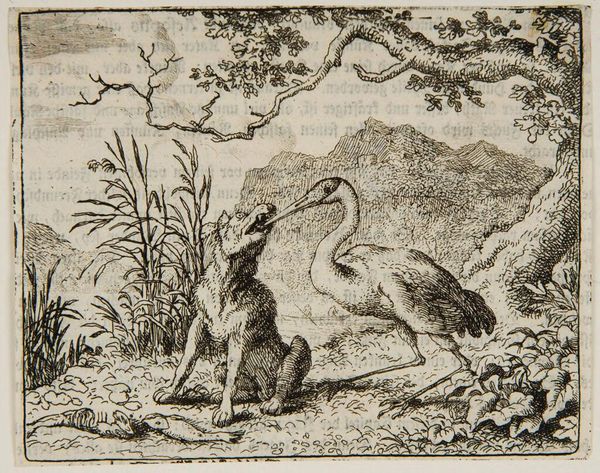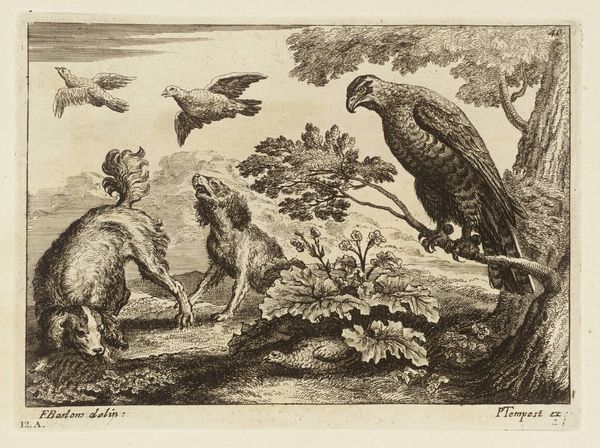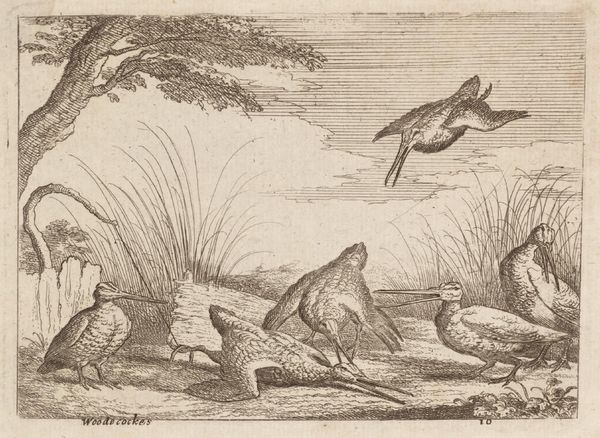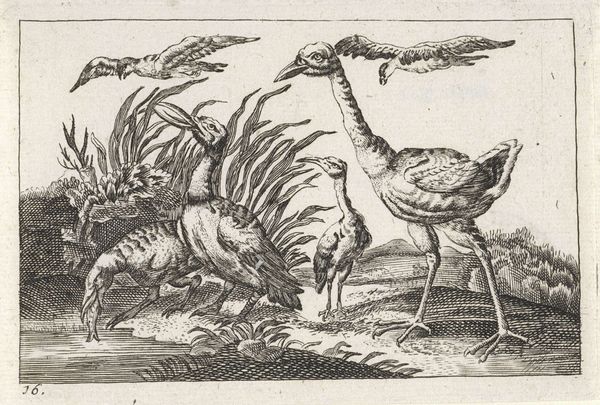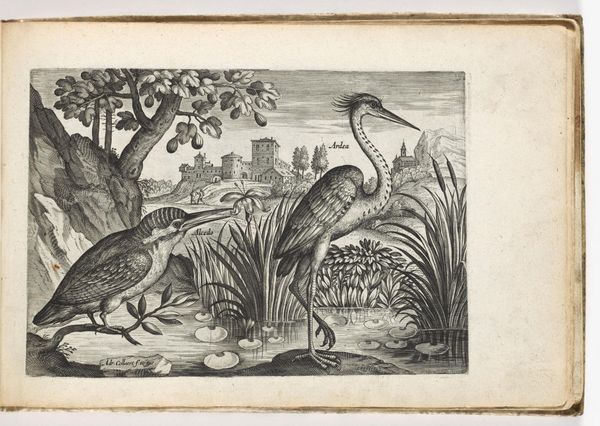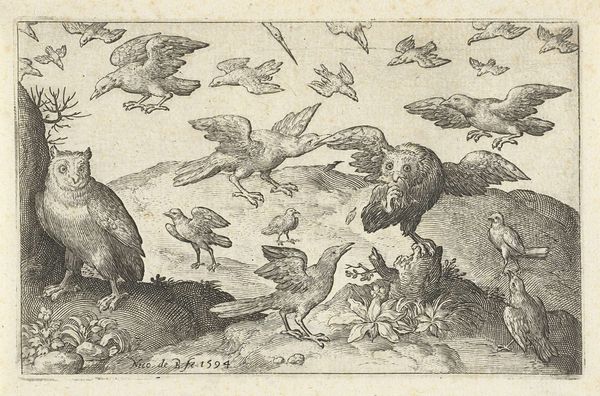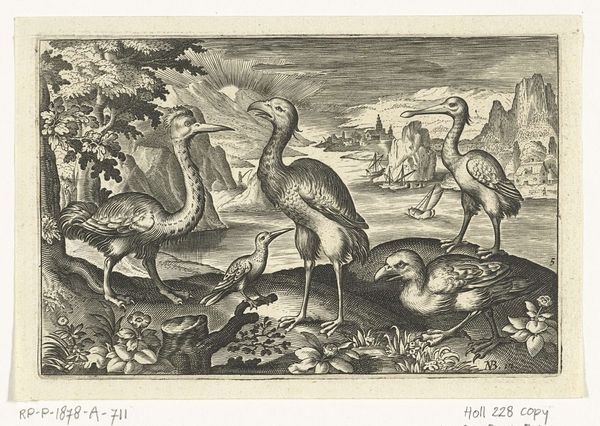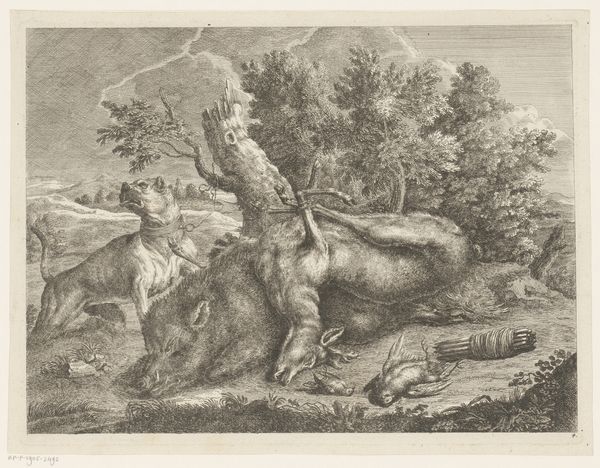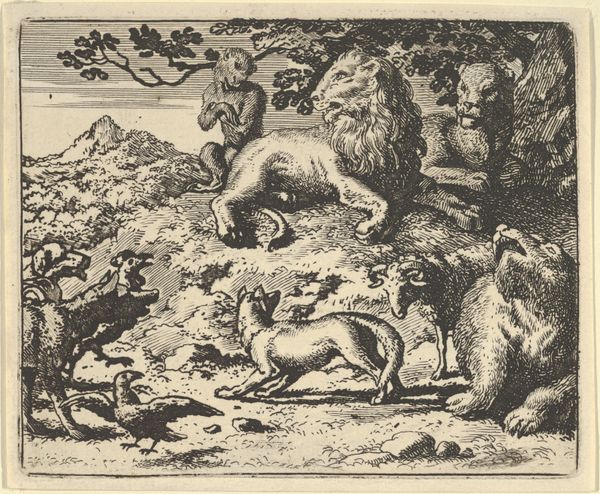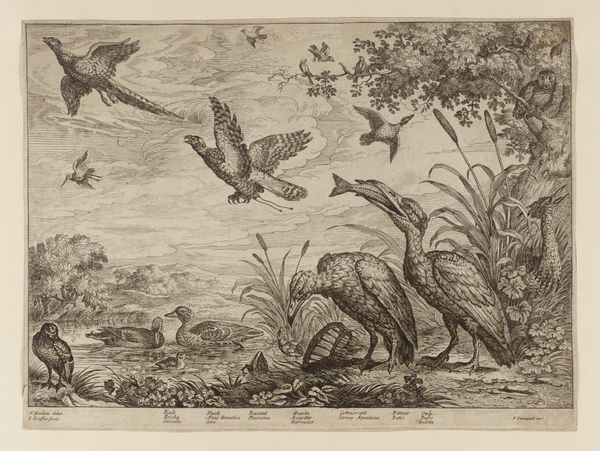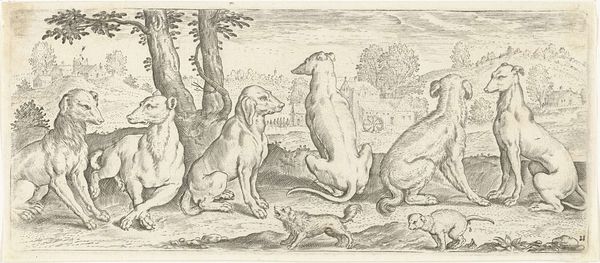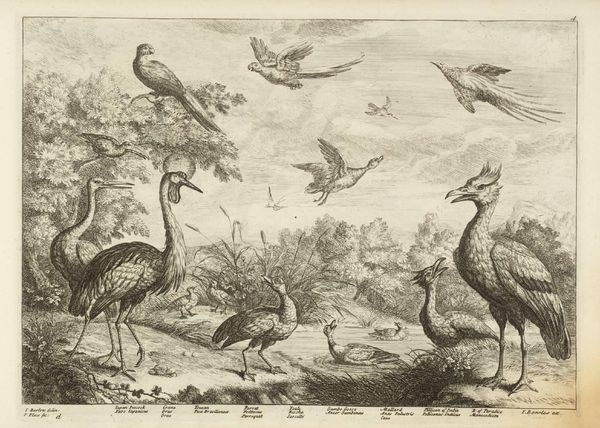
The Stork Removes a Bone from the Wolf's Throat from Hendrick van Alcmar's Renard The Fox 1650 - 1675
0:00
0:00
drawing, print
#
drawing
#
ink drawing
#
pen drawing
#
mechanical pen drawing
# print
#
pen illustration
#
pen sketch
#
old engraving style
#
bird
#
pen-ink sketch
#
pen work
#
sketchbook drawing
#
pencil art
Dimensions: Plate: 3 13/16 × 4 1/2 in. (9.7 × 11.5 cm) Sheet: 4 in. × 4 13/16 in. (10.2 × 12.2 cm)
Copyright: Public Domain
Curator: Looking at this scene, I am reminded of Aesop’s fable—intriguing. The fine lines create a surprisingly tense atmosphere despite the somewhat whimsical subject. Editor: Indeed, this is "The Stork Removes a Bone from the Wolf's Throat," dating back to the period of 1650 to 1675, part of Hendrick van Alcmar's series "Renard The Fox." It's currently held at the Metropolitan Museum of Art. What cultural resonances do you see in the images of a wolf and a stork, their interaction and placement within the composition? Curator: Well, immediately, the wolf as a traditional symbol of predatory power is juxtaposed against the seemingly gentle and graceful stork. The dense, almost suffocating background perhaps alludes to a dangerous situation—a sort of social contract gone awry. The bone lodged in the throat becomes a potent symbol of a societal ill. Editor: Fascinating, and I wonder if the artist is employing the stork, typically linked with birth and renewal, to signify something deeper—perhaps the fragile role of mediators, or the complex idea of reciprocity, between the powerful and the vulnerable? Think of the risks and benefits for each party. Curator: Absolutely. Power dynamics are undeniably at play here, with the stork negotiating this tricky scenario. Is this commentary on how those perceived as weak sometimes offer indispensable services even to the most feared figures in a society? I cannot help but think of Foucault. The narrative extends beyond mere kindness—it becomes an economic transaction loaded with political implications. Editor: Exactly. And consider the broader symbolic weight—wolves feature in mythology as both villain and noble leader, whilst the image of a stork is culturally embedded within so many different creation myths, too. The scene resonates in surprising ways when seen in a contemporary context, from precarious labor conditions to post-colonial negotiations between powerful empires and smaller states. Curator: It makes one consider which figures and relations this arrangement of nature maps onto today. Perhaps "The Stork Removes a Bone…" speaks volumes about today's complicated world, which might make it especially vital. Editor: This small but striking scene is full of lasting visual reminders about mutual dependency and potentially risky encounters.
Comments
No comments
Be the first to comment and join the conversation on the ultimate creative platform.
